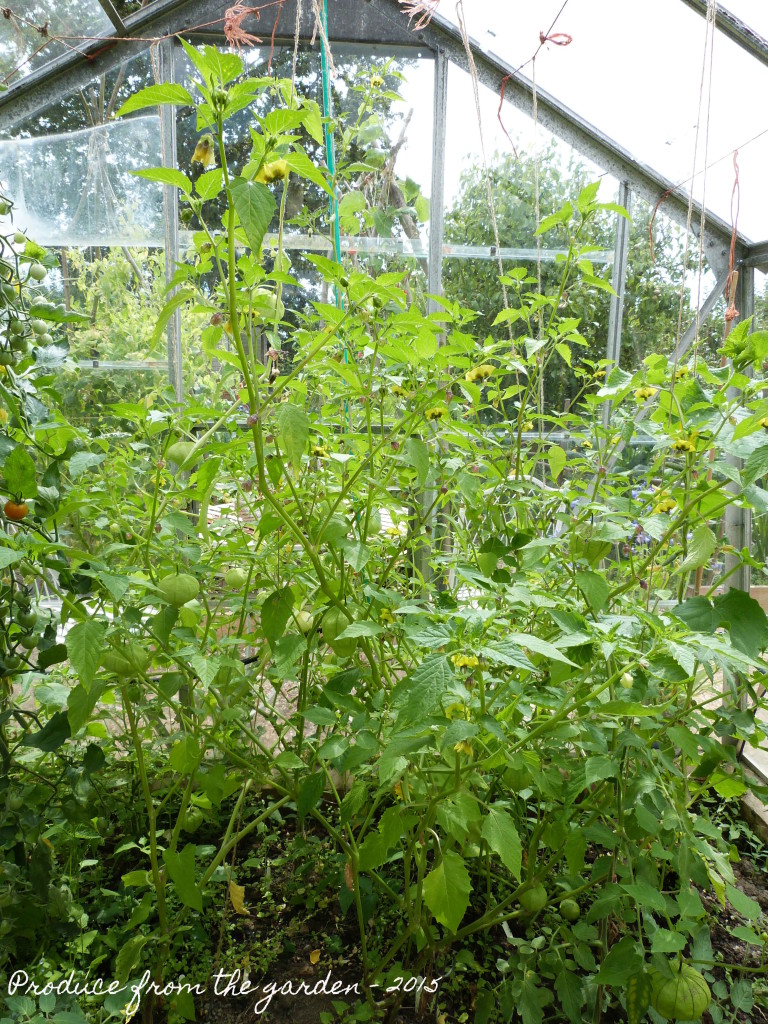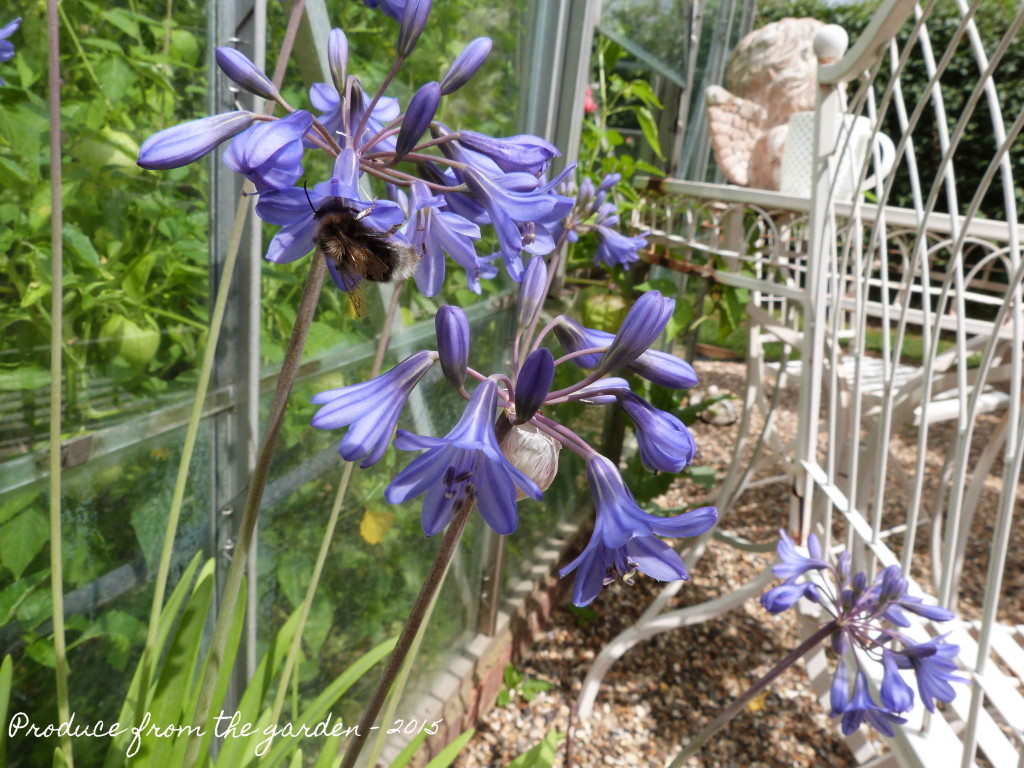I should have the hoe out and be tackling the weeds that have sneaked into my dahlia bed, but the hot humid weather is better suited to picking blackcurrants and pottering in the kitchen garden. On my way to the soft fruit bed I noticed I was starting to get a few sweet pea flowers. Those of you who read my sweet pea posting will know that I sowed the seed late so the flowers are in turn a bit late too. I also made a silly error placing sunflowers (for cutting) next to them; they’re thriving, taking up lots of space and shading the sweet peas. So I’m not expecting huge posies of sweet peas this year, but even a few are enough for their English summer scent to drift through our home.
 A few sweet peas
A few sweet peas
I popped into the greenhouse, where I’m greeted by a tomatillo forest; I blame the husband as he insisted I try them this year. They’re not endearing themselves to me, taking up too much space, overcrowding my gorgeous mini cucumbers and we’re yet to feast on them as I’m not really sure when they’re ripe. Every plant in my kitchen garden has to perform well to be allowed the following year, at the moment the tomatillos are out, let’s hope they make the most delicious salsa to redeem themselves.
 The tomatillo forest!
The tomatillo forest!
Whilst wandering down through the kitchen garden I noticed Artichokes looking so stately, elegant architectural structure with a sophisticated colour palette. Shame about the black fly!
 Beautiful artichokes
Beautiful artichokes
Then I’m drawn to my agapanthus attracting a bee. It’s a lovely cut flower which has a long vase life if the water’s changed frequently.
 Agapanthus and a bee
Agapanthus and a bee
 Agapanthus
Agapanthus
Finally I made it to the soft fruit border at the bottom of the kitchen garden; to reward me for focusing on the job in hand I spotted one of our first ripe raspberries, Yum.  Our first raspberry
Our first raspberry
I have three bushes and they are laden this year, I plan to bake a black currant cake for the weekend, if it’s successful I’ll pop the recipe up on the blog next week. In one of Sarah Raven’s books she suggests to prune the oldest 1/3 of branches whilst harvesting, you can then strip the fruit off with a fork at your leisure. Traditional thinking is to prune in the winter months when the bush is dormant. I’m always up for trying out new ideas, the theory of pruning early during harvest allows new growth to mature sufficiently before winter and will produce fruit the following year. Fingers crossed for increased productivity.
 Blackcurrants
Blackcurrants
 Harvested blackcurrants
Harvested blackcurrants
 Flowers grouped in a variety of single stem vases
Flowers grouped in a variety of single stem vases Dog wood stems, a winter garden staple, also look striking in a vase
Dog wood stems, a winter garden staple, also look striking in a vase














